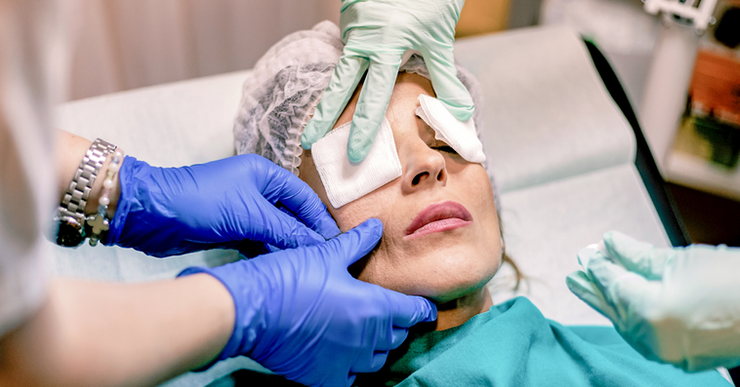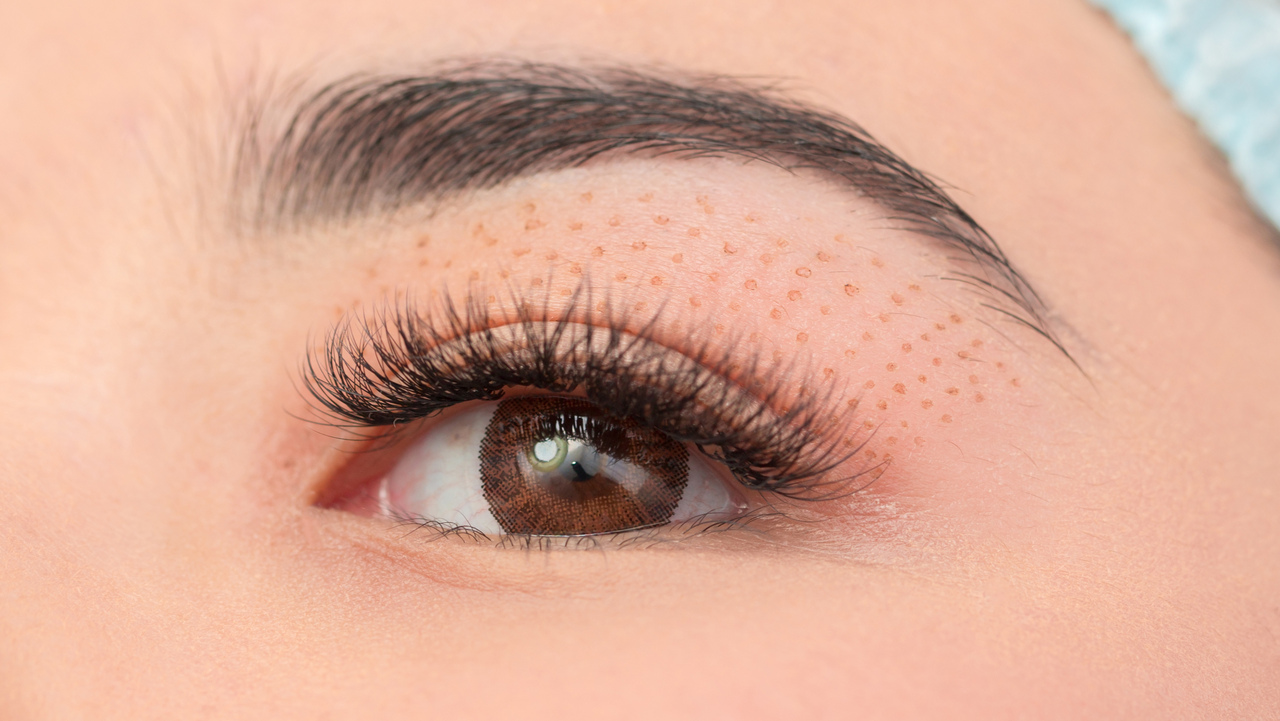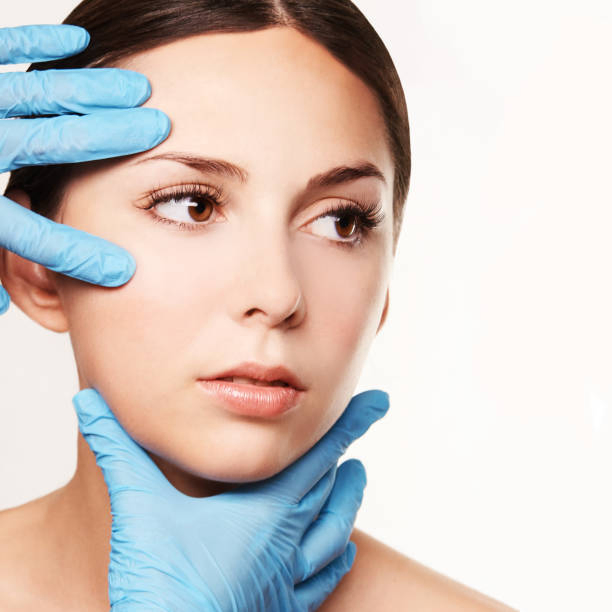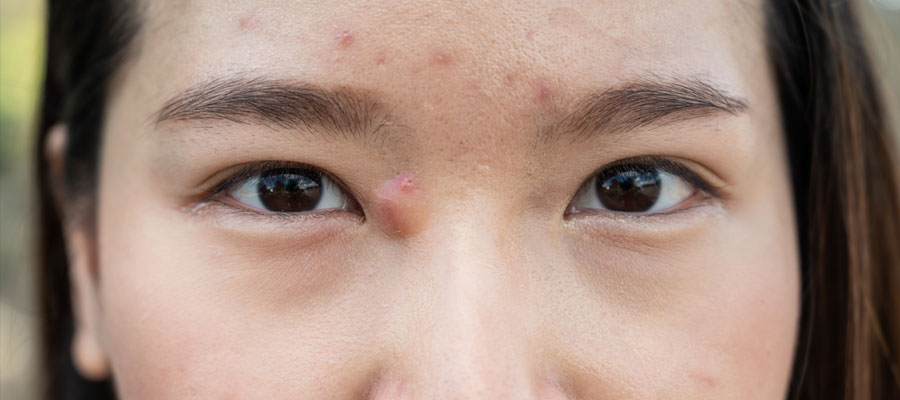The Eye-Twist: Understanding Entropion, a Condition Where Your Eyelids Turn Inward
Entropion is a condition wherein the eyelid, typically the lower one, turns inward towards the eye, causing the eyelashes to rub against the cornea, the transparent layer covering the front of the eye. This can result in eye irritation, discomfort, redness, and even corneal damage.
What are the different types of Entropion?
Different types of Entropion are classified based on their underlying causes and the specific parts of the eyelid that are affected. The main types of Entropion include
• Involutional Entropion: This is the most common type of Entropion and is caused by age-related changes in the muscles and tissues that support the eyelid.
• Congenital Entropion: This type of Entropion is present at birth and is usually caused by a developmental abnormality in the eyelid.
• Spastic Entropion: This type of Entropion is caused by a spasm or contraction of the muscles that control the eyelid.
• Cicatricial Entropion: This type of Entropion is caused by scarring of the eyelid skin or underlying tissues, which can result from injury, infection, or certain skin diseases.
• Mechanical Entropion: This type of Entropion is caused by an external factor, such as a tumour or mass pushing the eyelid inward.
What causes Entropion?
Entropion is usually caused by a combination of age-related changes in the eyelid muscles and tissues, which cause them to become lax and lose their normal tone and tension. This can result in the eyelid turning inward, causing the lashes to rub against the eye. However, there are also other potential causes of Entropion, which include
• Scarring or trauma: Injuries to the eyelid, such as burns or cuts, or certain eye surgeries can cause scarring and contracture of the eyelid, leading to Entropion.
• Congenital abnormalities: Some babies are born with Entropion, usually caused by a congenital anomaly in the eyelid or the muscles that control it.
• Infection: Inflammatory or infectious conditions affecting the eyelid, such as trachoma or herpes simplex, can cause Entropion.
• Neurological disorders: Certain neurological disorders, such as Bell’s palsy, can cause weakness or paralysis of the muscles that control the eyelid, leading to Entropion.
• Allergies: Chronic allergies or other inflammatory conditions can cause chronic eyelid swelling and inflammation, contributing to Entropion.
• Previous eyelid surgery: Previous eyelid surgery, primarily if not performed correctly, can sometimes lead to Entropion.

How is Entropion treated?
Entropion is typically treated with surgery to reposition or tighten the eyelid to no longer turn inward. The surgical approach will depend on the Entropion’s severity, the condition’s underlying cause, and the patient’s overall health.
Some standard surgical techniques used to treat Entropion include
Horizontal eyelid tightening involves removing a small section of skin from the eyelid and tightening the remaining tissue to pull the eyelid outward.
Quickert sutures: This technique involves placing a series of sutures in the eyelid to tighten and reposition it.
Tarsal strip procedure: involves tightening the tissue that runs along the inside of the eyelid that stabilises the eyelid and prevents it from turning inwards.
Full-thickness eyelid resection: This is a more extensive surgery involving removal of a wedge-shaped section of the eyelid, and reattaching it after repositioning.
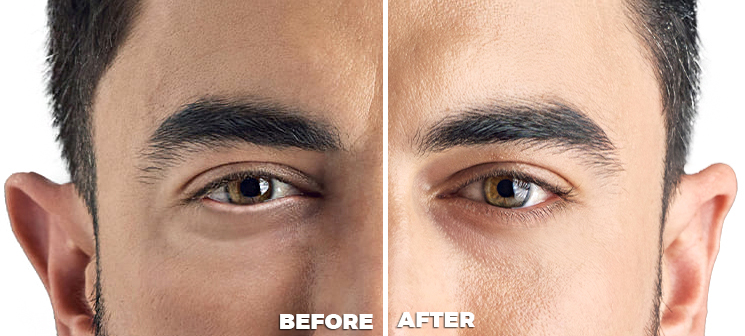
How much does the Entropion surgery cost?
The cost of entropion surgery ranges from Rs.10,000 to Rs 50,000 and is determined by several factors, such as the type of surgery, the complexity of the treatment,, the experience of the surgeon, and the location of the clinic. To get a more accurate estimate, contact us so we can provide specifics based on your case history.
Are there any side effects of Entropion surgery?
Entropion surgery can have potential side effects and risks like any surgical procedure. Some of the possible side effects of entropion surgery may include
swelling and bruising, infection, bleeding , scarring, dry eyes, overcorrection or under correction and vision loss.
It is important to remember that these complications from entropion surgery are generally rare, and most people experience a good outcome from the procedure, especially when undertaken by an experienced and trained oculoplastic surgeon.
What is the difference between Entropion and Ectropion?
While Entropion causes the eyelid to turn inwards toward the eye, Ectropion, on the other hand, causes the eyelid to turn outward away from the eye, exposing and drying the eye. This can cause symptoms such as dryness, tearing, redness, and discomfort, increasing the risk of infection and corneal damage. Ectropion is often caused by age-related changes, facial nerve paralysis, previous injury or surgery, or certain skin conditions.
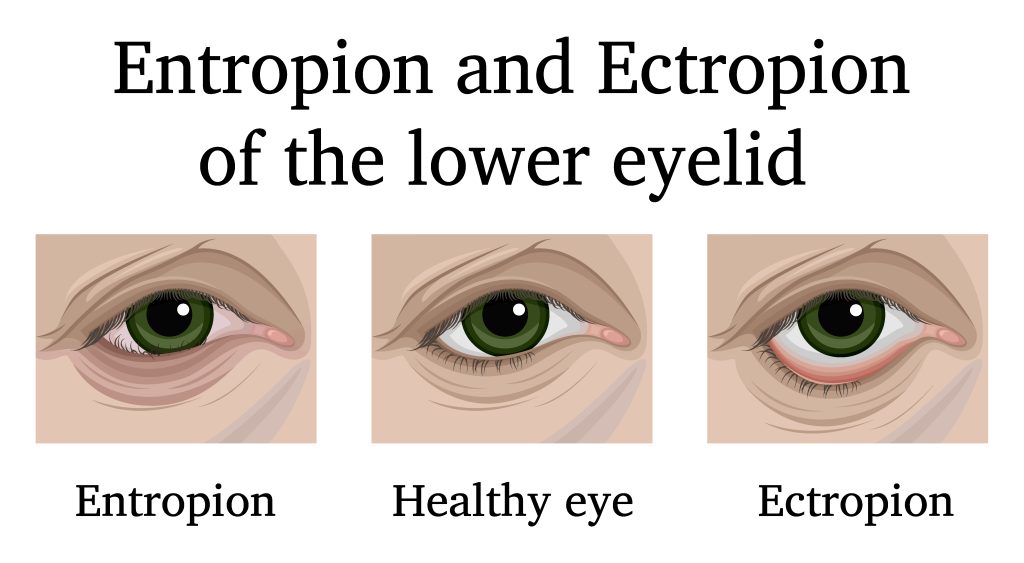
Treatments available at Clinica Fai
Dr Shubhra Goel is trained in medical and surgical treatments, which means she can provide a range of options for treating Entropion, including non-invasive and surgical treatments. Our patients can choose the treatment that best suits their needs, minimally invasive or more extensive surgery.
We are committed to patient safety and are highly skilled in performing delicate procedures around the eyes. We use the most advanced techniques and technologies to ensure that patients receive the best possible care and that their results are natural-looking and long-lasting.


